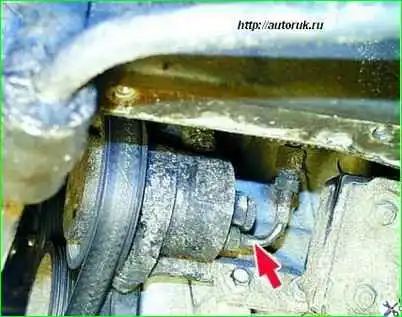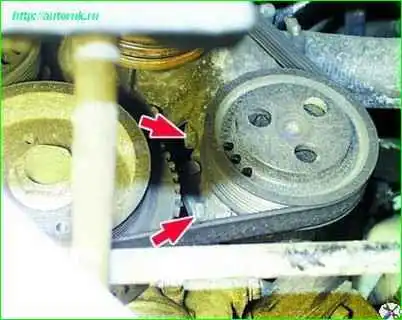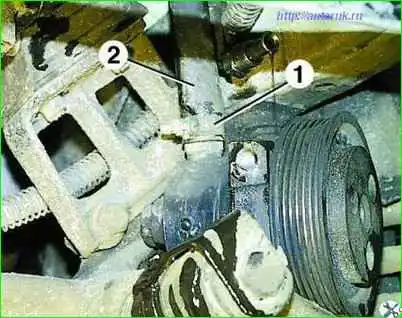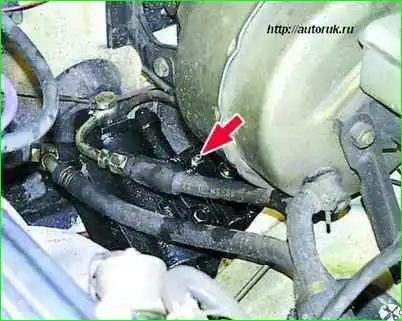Place the vehicle on the parking brake.
Install stands for the rear wheels.
Raise the front of the car and place it on supports.
Remove the front engine splash guard.
Remove the alternator belt.

Drain the fluid from the power steering system.
To do this, unscrew the hose on the pump that goes to the steering mechanism.

Unscrew the two pump mounting bolts and lower the pump (it remains hanging on the hose).

Loosen clamp 1 and disconnect hose 2 from the pump, while holding the pump.
Install the pump in reverse order.
Tighten the pump mounting bolts.
Tighten the hose mounting bolt to a torque of 44–62 Nm (4.4–6.2 kgf m).
After installation, fill and bleed the power steering system.
Pumps can be supplied as spare parts with a fitting for the upper hose or without a fitting.
If the new pump does not have a fitting, you need to unscrew the fitting from the old one.
Replacing hydraulic fluid

Drain the fluid from the power steering system.
To do this, unscrew the hose on the pump that goes to the steering mechanism.
Reconnect the hose to the pump and tighten its mounting bolt to a torque of 44–62 Nm (4.4–6.2 kgf m).

Unscrew the plastic cap nut 1.
Pay attention to the condition of the rubber sealing ring.
Replace a torn or heavily compressed ring. Remove cover 2 of the tank.
Fill the liquid up to the mesh level.
Start the engine. In this case, the liquid goes into the system.
Add fluid with the engine running until the level stops at the grid level.
Bleed the power steering system.
Bleeding the hydraulic system
Turn the steering wheel all the way in one direction.

Unscrew the air bleed valve on the steering gear.
Without turning the valve, turn the steering wheel all the way in the other direction. In this case, air should come out of the valve, and then liquid.
Without touching the steering wheel, close the air release valve.





